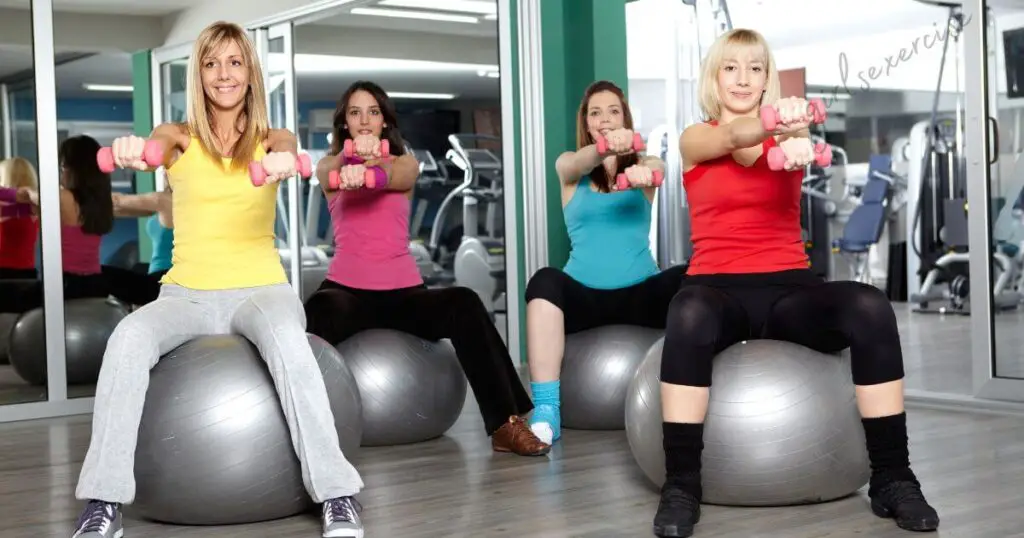Kegel exercises for women represent a transformative journey towards enhancing pelvic health, embracing self-care, and achieving a profound sense of empowerment.
These exercises, designed to strengthen the pelvic floor muscles, are far more than just a fitness routine.
They hold the key to unlocking a spectrum of benefits that go beyond mere physical health.
From boosting bladder control and intensifying sexual satisfaction to promoting better posture and supporting women during pregnancy and postpartum recovery, Kegel exercises offer a holistic approach to well-being.
This comprehensive guide will delve into the depths of Kegel exercises, unraveling their complexities and illuminating their potential to empower women in their pursuit of healthier, happier lives.
Understanding Kegel Exercises For Women:

Kegel exercises represent a discreet yet profound gateway to women’s pelvic health and well-being.
These specialized workouts target the intricate network of muscles that form the pelvic floor, a vital structure responsible for a myriad of functions in a woman’s body.
From ensuring bladder control to enhancing sexual satisfaction, Kegel exercises offer women of all ages a unique and empowering path to a healthier, more fulfilling life.
At the core of Kegel exercises lies the recognition of the pelvic floor’s significance. These muscles, often overlooked, are pivotal in maintaining the structural integrity of the pelvis and the organs it houses.
They contribute to core stability, thereby impacting posture and overall body strength. Understanding the anatomy of the pelvic floor is the first step towards comprehending the importance of Kegel exercises.
Kegels are not merely a physical routine; they have a profound impact on emotional well-being too.
The sense of control and empowerment that women experience as they regain command over their bladder, enhance their sexual pleasure, and prevent urinary incontinence is immeasurable.
These exercises offer a way to proactively manage health, fostering confidence and self-assuredness.
Whether you are in your twenties, thirties, or beyond, Kegel exercises can be tailored to your specific needs.
Customizing a routine that suits your goals, whether it’s preparing for pregnancy, facilitating postpartum recovery, or addressing sexual concerns, allows you to maximize the benefits of these exercises.
Kegels are not just about the end result but also the journey. Learning proper technique and avoiding common mistakes ensures that you can gradually progress through different levels of difficulty.
The guidelines for precise execution empower women to take control of their pelvic health effectively.
The Anatomy Of The Pelvic Floor:

Embarking on a journey into the realm of pelvic health, one must first comprehend the intricacies of the pelvic floor’s anatomy.
This remarkable web of muscles, ligaments, and tissues forms a critical foundation in the female body, influencing core stability, sexual function, and the prevention of urinary incontinence.
Understanding this intricate structure is paramount to appreciating why Kegel exercises are a cornerstone of women’s health.
The pelvic floor, often likened to a hammock or trampoline, cradles and supports essential organs such as the bladder, uterus, and rectum.
Its muscles stretch from the pubic bone to the tailbone and from hip to hip. This dynamic arrangement plays a vital role in maintaining pelvic health.
It acts as a stabilizing force for the entire body, contributing significantly to core strength and posture. Consequently, it forms the foundation of your physical well-being.
The sexual and reproductive aspects of the pelvic floor are equally profound. During arousal, these muscles contract rhythmically, enhancing pleasure for both partners.
Beyond intimate satisfaction, a strong and well-toned pelvic floor is crucial for the childbearing process.
These muscles help support the growing baby during pregnancy and play a role in the birthing process, providing essential aid during labor.
One of the most significant roles of the pelvic floor is in preventing urinary incontinence. The coordinated action of these muscles helps maintain control over the bladder.
They contract to prevent leakage and relax to allow for urination.
However, when these muscles weaken due to various factors such as childbirth, age, or hormonal changes, urinary incontinence can become a significant concern.
Benefits Beyond Bladder Control:

Kegel exercises, often associated primarily with regaining bladder control, hold within them a treasure trove of far-reaching benefits that transform not only physical health but also enhance overall well-being.
These exercises, when integrated into one’s daily routine, can wield profound effects in various aspects of a woman’s life.
Let’s first explore the enhancement of sexual satisfaction, a dimension of Kegel exercises often overlooked.
These exercises strengthen the pelvic floor muscles, leading to increased blood flow to the pelvic region.
This not only contributes to heightened sexual arousal but also leads to more intense and pleasurable orgasms.
Women who practice Kegel exercises often report enhanced sexual experiences, forging stronger emotional connections with their partners.
Another remarkable advantage is the improvement of posture. The pelvic floor plays a pivotal role in maintaining core stability and supporting the spine.
When these muscles are toned and strong, it translates to better posture.
An upright posture not only exudes confidence but also reduces the risk of back pain and musculoskeletal issues, contributing to overall physical comfort and agility.
Kegel exercises have a profound impact during pregnancy and postpartum recovery. For expectant mothers, these exercises prepare the pelvic floor for the stress of childbirth.
The ability to control and relax these muscles aids in a smoother and less traumatic delivery process.
Postpartum, Kegel exercises can expedite the recovery of pelvic strength, helping women regain their pre-pregnancy bodies and vitality.
Beyond these remarkable benefits, Kegel exercises also offer a sense of control and empowerment.
As women regain mastery over their bodies, it often leads to increased self-assuredness, bolstering self-esteem and fostering emotional resilience.
This heightened sense of control can extend to various aspects of life, providing a newfound vitality and strength.
The Empowerment Of Self-Care:

The concept of self-care is a profound and transformative force that extends beyond the realm of pampering and relaxation.
Kegel exercises exemplify the embodiment of self-care, offering women a means to take control of their bodies and overall well-being in a way that is both simple and remarkably powerful.
Self-care, at its core, is about taking deliberate steps to nurture and protect one’s physical and mental health.
In the context of Kegel exercises, it’s the act of dedicating time to strengthen and maintain the pelvic floor muscles, an often-neglected but essential component of a woman’s body.
This self-initiated care empowers women to actively engage with their health.
The beauty of Kegel exercises is their accessibility and simplicity.
With no need for specialized equipment or significant time commitments, women can seamlessly integrate these exercises into their daily routines.
This means that the power to enhance pelvic health and overall confidence is in their hands, quite literally. It’s a tool that empowers women to be the masters of their own destinies.
Kegel exercises represent an investment in long-term pelvic health.
By consistently practicing these exercises, women not only prevent urinary incontinence but also ensure the vitality and resilience of their pelvic floor muscles over the years.
It’s an act of self-love that pays off exponentially as women age, providing them with the assurance that they can maintain their quality of life.
This empowerment isn’t confined to the physical realm. As women take control of their bodies through Kegel exercises, they often experience an elevated sense of confidence and self-assuredness.
This newfound confidence can ripple into other aspects of life, leading to more assertiveness, stronger decision-making, and a greater sense of self-worth.
Guidelines For Proper Technique:

In the journey towards reaping the full benefits of Kegel exercises, mastering the art of proper technique is akin to holding the keys to a treasure trove.
The intricacies of executing these exercises with precision are pivotal in ensuring that women can maximize the benefits, sidestep common pitfalls, and gradually progress through various levels of difficulty.
At its core, Kegel exercises focus on the contraction and relaxation of the pelvic floor muscles. However, the subtlety of these muscles and the nuance involved necessitate precise guidance.
Detailed instructions provide women with the clarity required to achieve the desired results.
For those new to Kegel exercises, understanding which muscles to target and how to engage them effectively is paramount.
Tips and techniques to isolate the pelvic floor muscles are often game-changers. Women can learn to distinguish between the muscles they intend to work on and those that might inadvertently get involved.
These insights can fine-tune the exercises, ensuring that the efforts are channeled to strengthen the intended muscles.
Progression is another critical aspect of Kegel exercises. Just as one wouldn’t start lifting heavy weights in the gym without building strength gradually, a gradual approach is vital with Kegel exercises too.
Detailed guidelines help women understand how to progressively increase the difficulty of their exercises, ensuring they continue to challenge and strengthen their pelvic floor muscles over time.
Understanding common mistakes and pitfalls to avoid is equally vital. Women often fall into the trap of over-exerting themselves or employing incorrect techniques, which can lead to discomfort or ineffectiveness.
Detailed instructions serve as a safeguard, providing the knowledge required to steer clear of these issues.
Mastery of proper Kegel technique is akin to an art form. It’s a skill that requires patience, diligence, and ongoing learning. However, the rewards are substantial.
Women who invest in mastering this technique can look forward to enhanced bladder control, improved sexual satisfaction, and a stronger, more resilient pelvic floor.
In essence, these guidelines for proper technique are the bridge that connects aspiration to realization, offering women the opportunity to take control of their pelvic health with precision and mastery.
Customized Kegel Routines:

The beauty of Kegel exercises lies in their versatility and adaptability.
Women can harness the power of these exercises by crafting routines tailored to their unique needs and goals.
Whether it’s navigating the remarkable journey of pregnancy, embarking on a transformative postpartum recovery, or addressing intimate concerns, customizing Kegel routines opens the door to achieving optimal results.
Pregnancy, with its extraordinary demands on a woman’s body, is a period where Kegel exercises can be invaluable.
Crafting a Kegel routine during pregnancy is an opportunity to prepare the pelvic floor for the upcoming challenges of childbirth.
These exercises can help increase the strength and endurance of the pelvic floor muscles, potentially leading to a smoother and less traumatic labor experience.
Postpartum recovery is another pivotal phase in a woman’s life, where customized Kegel routines play a critical role.
The body undergoes significant changes during pregnancy and childbirth, and these exercises can aid in restoring pelvic strength and functionality.
Tailoring a postpartum Kegel routine ensures a gradual and effective path to recovery, allowing women to regain their pre-pregnancy vitality.
For those with intimate concerns related to sexual health or pleasure, personalized Kegel routines can be a game-changer.
These exercises can address issues like decreased sexual satisfaction, enhancing arousal, or even managing discomfort during intercourse.
By adapting the exercises to focus on specific muscle groups or employing particular techniques, women can make substantial improvements in their sexual well-being.
Customization isn’t just about adapting to specific conditions or concerns; it’s also about tailoring the exercises to one’s current abilities and goals.
Whether you’re a beginner or have been practicing Kegels for a while, a personalized approach ensures that the exercises remain challenging and effective.
Ultimately, the power of personalized Kegel routines is the power to take control of one’s pelvic health and overall well-being.
It’s an opportunity to navigate life’s transformative phases with confidence and grace, knowing that a well-crafted routine is supporting your unique needs and aspirations.
Kegel exercises, when customized, are more than just workouts; they are personalized pathways to a healthier, more empowered you.
Overcoming Common Challenges:

Embarking on a journey of Kegel exercises is a transformative path toward enhanced pelvic health and overall well-being.
However, like any journey, it can be fraught with challenges and misconceptions.
This section serves as a guiding light, offering actionable strategies to conquer these hurdles and ensure that the benefits of Kegel exercises are fully realized.
One of the common challenges women face when beginning their Kegel exercise journey is maintaining motivation. It’s natural for enthusiasm to ebb and flow over time.
The key is to find strategies that keep the momentum going. Setting specific, achievable goals and tracking progress can be motivating.
Celebrating even small victories can fuel the determination to continue.
Another common misconception is that Kegel exercises are a one-size-fits-all solution. In reality, each woman’s needs and abilities are unique.
Understanding that customization is not only allowed but encouraged is essential.
Adapting the exercises to your specific requirements, whether it’s pregnancy, postpartum recovery, or sexual concerns, ensures that the exercises remain effective and relevant to your journey.
Consistency can also be a significant challenge. It’s easy for busy lives to interrupt routines.
This section offers practical strategies for seamlessly integrating Kegel exercises into daily life, making them as natural as brushing your teeth.
Whether it’s associating them with existing habits or setting reminders, finding ways to weave them into your daily routine can be a game-changer.
A lack of understanding about whether the exercises are being performed correctly can be disheartening. Many women wonder if they’re doing Kegels right.
This section provides clear instructions and techniques to ensure that you are accurately targeting the pelvic floor muscles. The guidance ensures that you gain confidence in your form and technique.
Lastly, self-doubt and skepticism can sometimes overshadow the journey. It’s important to realize that the benefits of Kegel exercises are supported by scientific evidence and the experiences of countless women.
This section provides the knowledge and reassurance needed to dispel doubts and build trust in the process.
Conquering the common challenges and misconceptions surrounding Kegel exercises empowers women to navigate their journey with resilience and determination.
The strategies provided serve as beacons of guidance, ensuring that motivation remains steadfast, progress is tracked, and doubts are dispelled.
This section transforms Kegel exercises from mere workouts into a life-changing path to pelvic health and overall empowerment.
The Path To Empowered Womanhood:

The journey towards empowered womanhood is a profound odyssey that encompasses physical, emotional, and mental facets of well-being.
Kegel exercises, often underestimated, have the potential to serve as a catalyst, illuminating this path to empowerment.
By delving into the intricacies of this journey, we can uncover how these exercises are instrumental in fostering self-assurance, resilience, and overall empowerment.
At the core of this path is a holistic transformation, one that begins with recognizing that empowerment extends beyond physical health.
While Kegel exercises certainly offer women enhanced bladder control and sexual satisfaction, they also represent the embodiment of self-care.
In practicing these exercises, women embark on a journey of nurturing their bodies, establishing a profound connection with their inner selves, and manifesting self-respect.
Empowerment through Kegel exercises is not confined to a particular stage of life; it transcends age. Women in their twenties can utilize these exercises to lay a strong foundation for lifelong pelvic health.
Those in their thirties and beyond can find solace in knowing that Kegels are a reliable tool to combat the natural aging process and maintain quality of life.
The path to empowered womanhood extends into motherhood as well. Pregnancy and postpartum recovery are transformative phases in a woman’s life, and Kegel exercises can be her steadfast companions.
They prepare the pelvic floor for the rigors of childbirth and facilitate a smoother recovery postpartum.
This empowerment not only impacts physical health but also creates a sense of control and resilience during a time of profound change.
This journey is not without its challenges and misconceptions.
The section on overcoming common challenges in Kegel exercises plays a pivotal role in empowering women to persist through doubts, maintain motivation, and dispel myths.
It equips them with the knowledge and strategies needed to face hurdles head-on and emerge stronger.
Conclusion:
Kegel exercises for women are a powerful tool for enhancing pelvic health and overall well-being.
These exercises offer numerous benefits, including improved bladder control, enhanced sexual satisfaction, better posture, and support during pregnancy and postpartum recovery.
By practicing Kegel exercises consistently and customizing routines to suit individual needs and goals, women can empower themselves to take control of their pelvic health, foster self-confidence, and navigate the various stages of life with resilience and grace.
Whether you are in your twenties, preparing for motherhood, or seeking to improve your sexual health, Kegel exercises are a versatile and valuable To your self-care routine.
FAQs About Kegel Exercises For Women
What are Kegel exercises for women, and what do they aim to improve?
Kegel exercises for women are targeted workouts designed to strengthen the pelvic floor muscles. These muscles support the bladder, uterus, and rectum, and their primary goals are to improve bladder control, enhance sexual satisfaction, and promote overall pelvic health.
Are Kegel exercises only for women with incontinence issues?
No, Kegel exercises are beneficial for women of all ages and backgrounds. While they do help with incontinence problems, they offer a wide range of benefits, including increased sexual satisfaction, better posture, and even assistance during pregnancy and postpartum recovery.
How do I perform Kegel exercises correctly?
To perform Kegel exercises correctly, first identify your pelvic floor muscles by stopping the flow of urine mid-stream (though this should only be done occasionally for muscle identification, not as a routine exercise). To exercise them, simply contract these muscles as if you’re stopping urination, hold for a few seconds, then release. Repeat this process 10-15 times, a few times a day.
Can Kegel exercises improve my sexual satisfaction?
Absolutely. A strong pelvic floor can lead to increased blood flow to the pelvic region, enhancing arousal and intensifying orgasms. Many women find that regularly practicing Kegel exercises significantly improves their sexual experiences.
Can Kegel exercises help during pregnancy and after childbirth?
Yes, Kegel exercises are beneficial during pregnancy as they prepare the pelvic floor for the rigors of childbirth. After delivery, they can expedite the recovery of pelvic strength, aiding women in regaining their pre-pregnancy vitality.
How long will it take to see results from Kegel exercises?
The time it takes to see results from Kegel exercises can vary from person to person. Some individuals notice improvements within a few weeks, while for others, it may take a few months. Consistency is key, so stick with the routine for the best results.
Can men do Kegel exercises as well?
Yes, Kegel exercises are not exclusive to women. Men can benefit from them too. These exercises can help improve bladder control and sexual satisfaction in men, and they are especially useful for addressing issues like erectile dysfunction and premature ejaculation.




Your website has helped me find my way through the huge amount of information out there. I hope that your efforts continue to be successful and brilliant.